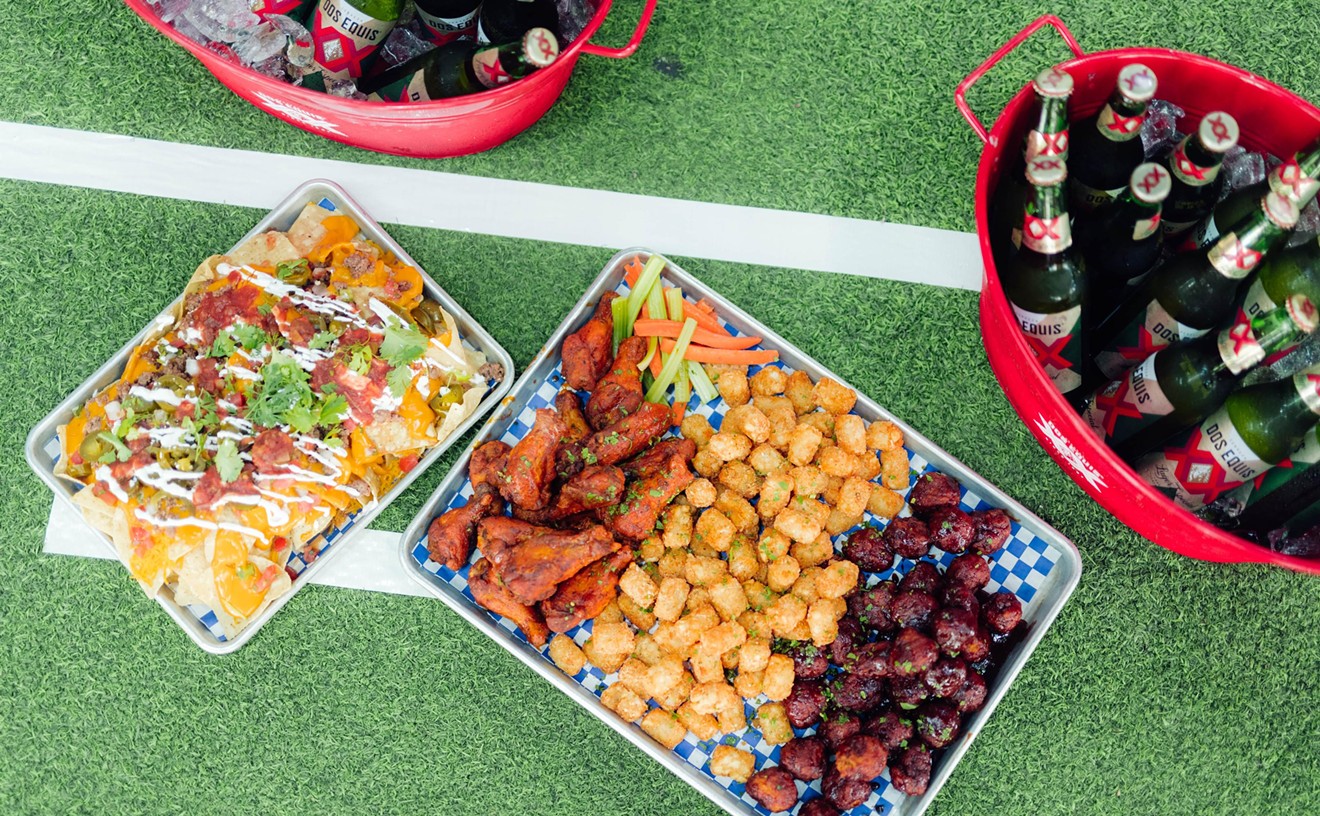Established in 1956 by German sausage scion Hugo Schreiner, Phoenix's eponymous shrine to fine sausages has changed very little physically since 1958, the year Gary Schiller started working there.
Schreiner's first owner, Hugo Schreiner, made his way from Europe to Rochester, New York, with his father and brother, then landed in Phoenix, where he decided to provide respite to the sausage-starved in the 1950s. Despite the Valley's lack of pine forests, snow-capped mountains and Bavarian yodelers, he continued to practice the culinary craft of cramming chopped, seasoned meat into animal intestines, a primordial food art that dates back to ancient Mesopotamian and Egyptian times.
After almost 45 years, Schreiner's quaint smokehouse-style building is still painted, appropriately enough, the reddish sausage brown chosen by its originator. It still sports the same signs that proudly announce it produces fine homemade sausages, which is the only advertising it's ever done.
And Schreiner's continues to unabatedly crank out the Valley's plumpest, juiciest sausages in all their heavily spiced glory.
The only real change in the business is that Gary Schiller, with his wife Nancy (who has a degree from ASU in food and nutrition), now owns Schreiner's. They bought it in 1968 from its ailing proprietor.
Gary and Nancy Schiller still make some sausages according to the original recipes introduced by the old-time sausage maestro, though they've developed an ever-growing list of their own recipes in the past 30 years. They've expanded their selection to include a veritable United Nations of both fresh and hickory-smoked sausages.
And, after adding on bit by bit to Schreiner's original kitchen adjacent to their small retail store, they now sell their meaty wares to some of the largest food brokers, restaurants and resorts in town. Upscale resort hotels like the Biltmore, the Phoenician and the Boulders even bring their own secret recipes to the Schillers to produce specialty sausages (which are not available for sale to the general public).
"We have over 100 different recipes for different kinds of products that we're producing, and even more besides that," says Gary Schiller.
The roll call now boasts, among other international favorites, Polish kielbasa, German bratwurst and bockwurst, Hungarian rope and kishka (a type of blood sausage made with barley), Landjaeger (a German ground beef jerky with caraway seeds), sweet and hot Italian links, English bangers and Cajun andouille, not to mention Mexican chorizo, Spanish chorico, Portuguese linguiça and an all-American cheese Furter, which turned out to be one of my personal favorites. After grilling, it's packed with pockets of molten cheese that explode in your mouth, instantly transporting you to Wiener Wonderland. And don't forget the Swedish country sausages perfumed with fresh sage -- or the Philadelphia scrapple.
The Schillers also have developed a line of delicious chicken and turkey sausages for the diet-conscious. Their poultry offerings may be low in the fat department (a mere 4 percent, according to Nancy), but they register high on my flavor chart. This divine line features smoked chicken basil with sun-dried tomatoes, chicken apple, chicken cranberry ("We make this during cranberry season -- fresh cranberries work a lot better," Gary notes), chicken blueberry during the season and even a low-fat chicken bratwurst. Schreiner's Southwest turkey sausage promises to be their next big low-fat hit; it's made with salsa, jalapeños, lime juice, red bell pepper, cilantro, spices and a splash of tequila.
"And during hunting season," Gary adds, "we don't process game, but we make sausage when you bring in your [prepared] elk, deer or antelope. We have a whole different line of sausages we make out of wild game."
You might say that sausage runs in Schiller's blood, since his grandfather was a traditional German sausage maker who had a sausage-making enterprise in Milwaukee, Wisconsin. Until five or six years ago, Schiller prided himself on making everything by hand -- that is, until he developed carpal tunnel syndrome from a lifetime career of stuffing and linking, forcing Schreiner's to order up a stuffing-and-linking machine.
"Over 10 million sausages linked," shouts Gary over the pile-driving pounding of the machine while pointing to an old sign hanging in the kitchen area. "And sometimes I feel like I stuffed and linked them all."
The stuffer/linker requires team effort for maximum production. Giovanni, who's on mixing/grinding duty the morning I visit, mans the funnel-shaped grinder, depositing pork or beef -- most of which is hand-boned on the premises to avoid bone chips -- with a variety of seasonings and spices into the machine's maws. The ground-up meat mixture, all of which is the best grain-fed, Midwestern product the Schillers can buy, is then dumped into the stuffer by hand.
Meanwhile, Jason, the person assigned to the stuffing-and-linking portion of the sausage-making process, deftly threads casing onto an armature of the stuffer. "The casing is natural hog intestines or sheep or beef, whichever meat we're using at the time," Gary Schiller explains. "We use artificial casings, too, made of plastic. There's some made out of seaweed."
A rhythmic thwack reverberates through the room every time the machine stuffs and twists a sausage into a link. Ray, who is also the deboner today, takes the final necklace of sausages, sometimes measuring 30 to 40 feet, depending on the length of the casing, and racks the sausages. All the finished sausage strands are then wheeled into a nearby smoker for final slow processing into ready-to-grill treats. Fresh sausages go directly into a cooler or walk-in freezer. Schreiner's recommends parboiling the fresh product for 15 minutes before grilling or frying them to make sure the sausage is cooked through.
Do Gary and Nancy Schiller eat a lot of their own sausage? "I do, really," admits Gary. "It's so great coming out of the smokehouse -- that's the best way. So we usually cut whatever we're making and sample it to make sure we're doing everything right."
"We think it's the crème de la crème of sausage," he adds. "We don't eat anyone else's, that's for sure."
Contact Kathleen Vanesian at her online address: [email protected]










